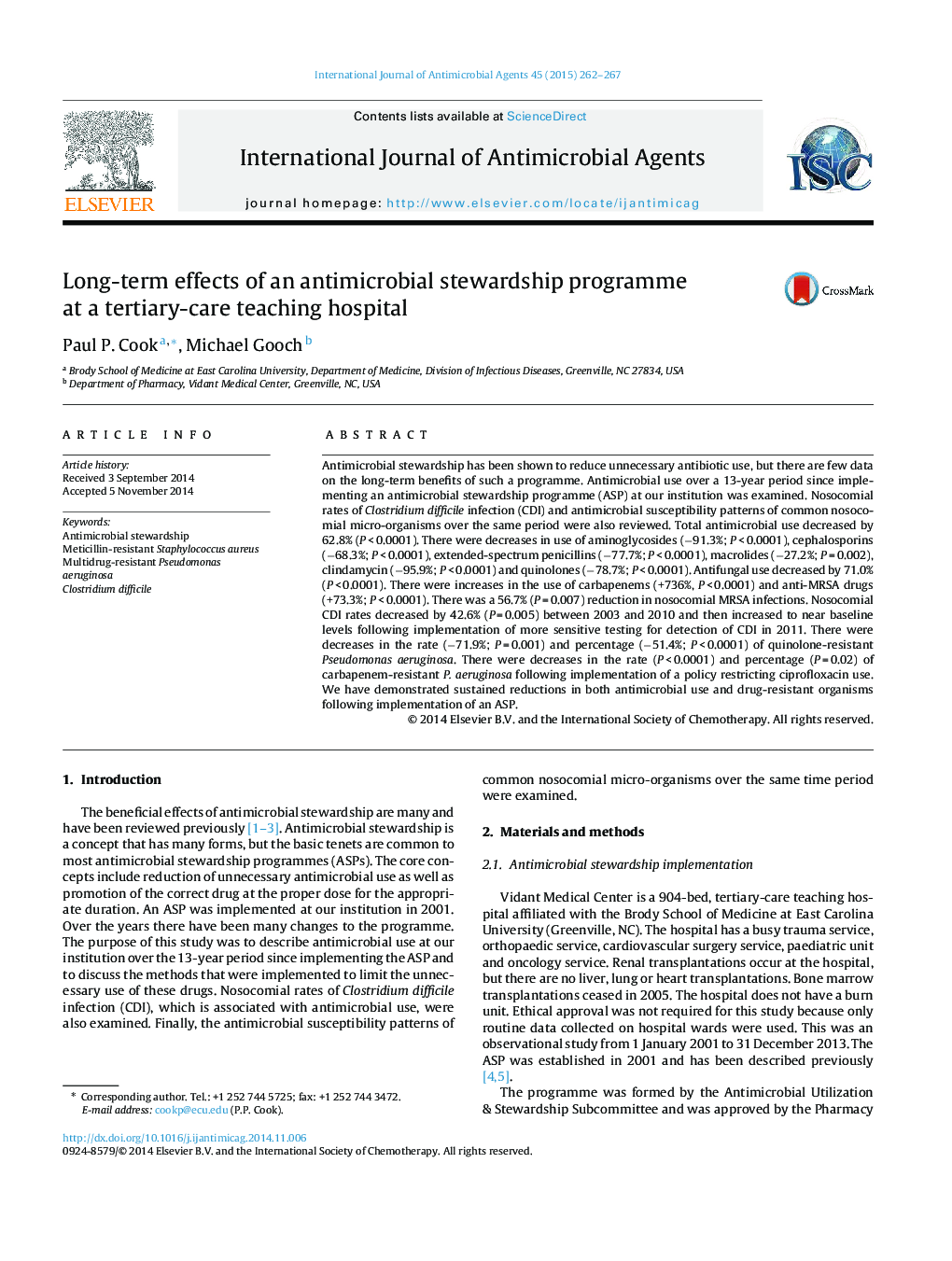| کد مقاله | کد نشریه | سال انتشار | مقاله انگلیسی | نسخه تمام متن |
|---|---|---|---|---|
| 6117801 | 1591769 | 2015 | 6 صفحه PDF | دانلود رایگان |
عنوان انگلیسی مقاله ISI
Long-term effects of an antimicrobial stewardship programme at a tertiary-care teaching hospital
ترجمه فارسی عنوان
اثرات درازمدت یک برنامه مراقبت ضد میکروبی در بیمارستان آموزشی ترمیمی
دانلود مقاله + سفارش ترجمه
دانلود مقاله ISI انگلیسی
رایگان برای ایرانیان
کلمات کلیدی
موضوعات مرتبط
علوم زیستی و بیوفناوری
ایمنی شناسی و میکروب شناسی
میکروبیولوژی و بیوتکنولوژی کاربردی
چکیده انگلیسی
Antimicrobial stewardship has been shown to reduce unnecessary antibiotic use, but there are few data on the long-term benefits of such a programme. Antimicrobial use over a 13-year period since implementing an antimicrobial stewardship programme (ASP) at our institution was examined. Nosocomial rates of Clostridium difficile infection (CDI) and antimicrobial susceptibility patterns of common nosocomial micro-organisms over the same period were also reviewed. Total antimicrobial use decreased by 62.8% (PÂ <Â 0.0001). There were decreases in use of aminoglycosides (â91.3%; PÂ <Â 0.0001), cephalosporins (â68.3%; PÂ <Â 0.0001), extended-spectrum penicillins (â77.7%; PÂ <Â 0.0001), macrolides (â27.2%; PÂ =Â 0.002), clindamycin (â95.9%; PÂ <Â 0.0001) and quinolones (â78.7%; PÂ <Â 0.0001). Antifungal use decreased by 71.0% (PÂ <Â 0.0001). There were increases in the use of carbapenems (+736%, PÂ <Â 0.0001) and anti-MRSA drugs (+73.3%; PÂ <Â 0.0001). There was a 56.7% (PÂ =Â 0.007) reduction in nosocomial MRSA infections. Nosocomial CDI rates decreased by 42.6% (PÂ =Â 0.005) between 2003 and 2010 and then increased to near baseline levels following implementation of more sensitive testing for detection of CDI in 2011. There were decreases in the rate (â71.9%; PÂ =Â 0.001) and percentage (â51.4%; PÂ <Â 0.0001) of quinolone-resistant Pseudomonas aeruginosa. There were decreases in the rate (PÂ <Â 0.0001) and percentage (PÂ =Â 0.02) of carbapenem-resistant P. aeruginosa following implementation of a policy restricting ciprofloxacin use. We have demonstrated sustained reductions in both antimicrobial use and drug-resistant organisms following implementation of an ASP.
ناشر
Database: Elsevier - ScienceDirect (ساینس دایرکت)
Journal: International Journal of Antimicrobial Agents - Volume 45, Issue 3, March 2015, Pages 262-267
Journal: International Journal of Antimicrobial Agents - Volume 45, Issue 3, March 2015, Pages 262-267
نویسندگان
Paul P. Cook, Michael Gooch,
